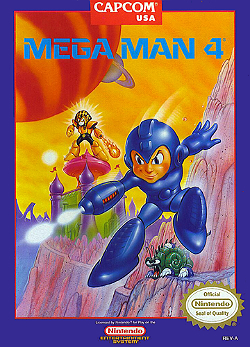
Pokemon has always been a massively popular franchise: 15 years since the Japanese Red and Green, and the series is still going strong. But as the years have gone by, the franchise has lost some of its luster, due to Game Freak's refusal to do any huge changes. But this is different: Pokemon Black and White is like GF's slap-in-the face: this is the largest change of the game in Pokemon history, and it definitelly paid off.
Now I'm not saying that the Gen 4 games were bad: quite on the contrary, I enjoyed them a lot. But once you play this game, there is simply no going back.
Pokemon Black and White starts off like any other Pokemon game: waking up in your house in the Unova Region, you get to choose from the 3 starter Pokemon (The speedy and defensive Grass-type Snivy, the powerhouse Fire-type Tepig, and the all-arounder Water-type Oshawott), and then build a team from there to beat the 8 Gyms and then the Pokemon Leauge. This may sound simple enough, but the more you dive into it, the game's true colors show: this is one of the most complicated games ever made. Hidden under its childlike designs and bright colors is an RPG with many intricacies: stats are determined on type, natures, styles, orientations, breeding, and much, much more. The learning curve is steep for the newcomer, but once you scale the cliff, you will be hooked. This game is more addictive than drugs: it starts to become a lifestyle, an endless treasuretrove of fun.
This is all old news for the Pokeveteran, so what does Pokemon Black and White offer to them? Answer: a whole lot. A change in plot is the biggest difference, with Team Plasma having a much more dedicated villan role than past evil teams. The side and main characters have much more personalites, like how Gym Leaders help you around town and with activating new areas rather than just sitting idely in the same place forever. The main story is about averave for a normal RPG: about 20 hours, but with training and catching Pokemon devouring the rest of your time.
Possibly the largest improvement in Black and White is the step-up in graphics. Instead of those slight seconds of visual trickery as seen in Generation 4, these games have huge, sprawling bridges, giant 3-D castles, cities actually the size of cities, and spectacular camera angles. The battles are the biggest leap, though. Before, battles were just cardboard cut-outs moving slightly and throwing words at each other. This time, the Pokemon move, jump, flap their wings, dance, and make poses all through battle, making encounters feel really alive. Battles also move at a 2x faster rate than before, so you never feel bored.
Much has been made about the new Pokemon in the game. There are over 156 of them, each more unique than the last. But the big reason they've got so much attention is that they are the only ones that appear in the game: for the fist time in Pokemon history, caves are not littered with Geodudes and Zubats. This also means that veterans have to rethink strategies instead of going into random battles autopilot, and newbies have a fresh start without having to learn all about the other 493. Don't worry, Dragonite and Garchomp lovers: Pokemon from the other 4 Generations appear after the main story is done, and the ability to mix the old Pokemon with the new ones is extremelly enguaging.
Pokemon Black and White also succeds on the slightly smaller changes: the music is much more enjoyable than Gen 4's, TMs are now unlimited usage (a practical godsent for people like me), leveling up is much easier due to obtaining two Exp. Shares and one Lucky Egg early on (which were practically impossible to find in previous generations), Legendaries seem easier to catch, the ability to have many Key Items selected, and the mulitiplayer options are greatly expanded, with random matchups and super-fast Infared connection.
Game Freak may've fixed many of the problems with Pokemon, but a few still persist. As with the aformentioned situation with a steep learing curve, the dialoge seems a bit more cheesy this time, and Pokemon encounter rate has seemed to have shot up a bit. These are minor problems, and only add tiny scratches to this pure gemstone.
VERDICT:
Gameplay: Improved by tenfold. The best in the whole series. 10
Graphics: Also a major step-up. A world you can really relate to. 10
Audio: Brillant. One of the only DS games that you need headphones for. 10
Overall: Game Freak truly lived up to their slogan "A New Beginning". Perfect for any fan of the series, whether they be newbie or Pokefreaks. If you could only have one DS game for the rest of your life, make it this one.
10 out of 10 Starmies







